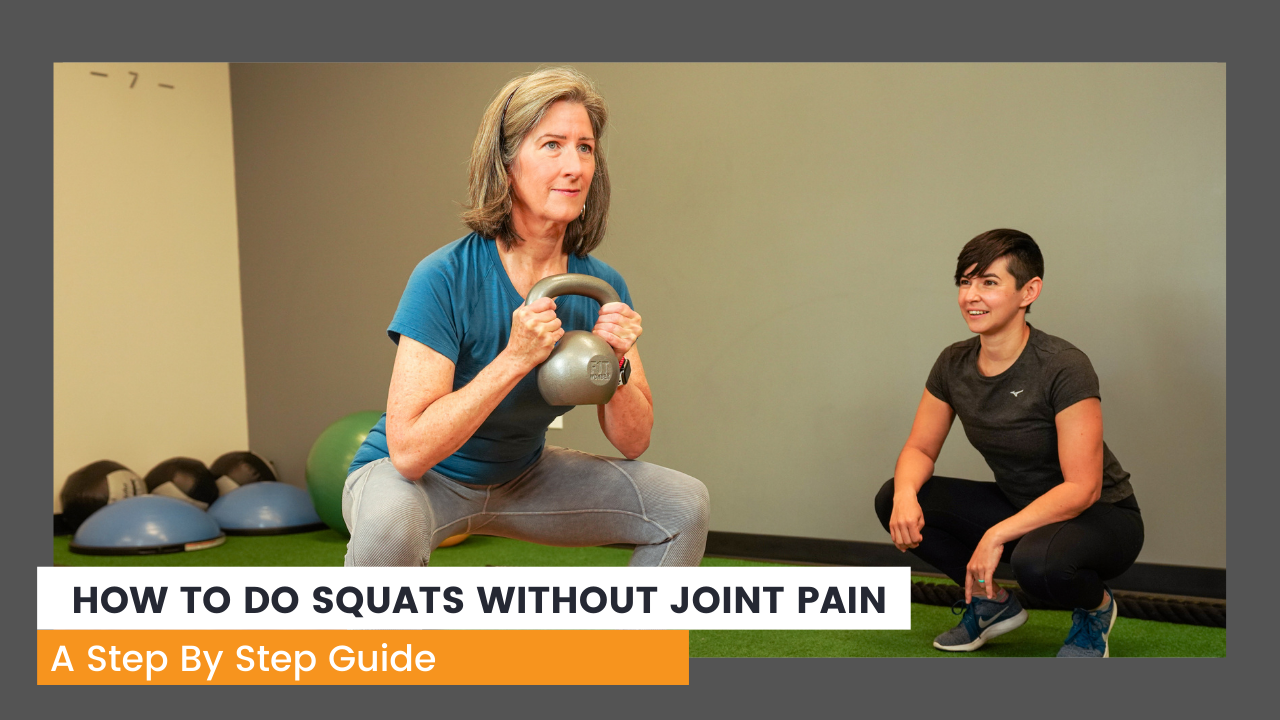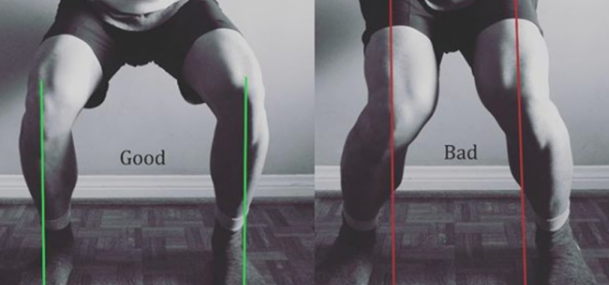How To Do Squats Without Pain | A Step-By-Step Guide
The squat is another foundational movement pattern that we use to build strength and protect your joints. To avoid pain, it’s important to build a solid foundation before doing too many repetitions or adding too much weight. In this article we'll teach you how to safely and effectively perform the squat to help solve chronic joint pain.
Entire books have been written on the subject or squatting. For our purposes (limiting impact on our joints), we will only cover the basics you need to know to perform this movement safely.
How To Squat Without Stressing Your Joints
Ready the practice your squat? Follow these step-by-step instructions to learn the basics. Then keep reading to learn how to fix common mistakes and learn new variations. To perform:
Find the stance that works best for you. Adjust the width of your stance and angle of your toes to find the best position for your body type.
Perform an abdominal brace to control any spinal movement.
Develop even more tension/torque by 'screwing' your feet into the ground.
Initiate the movement by sending your hips back (unlocking at the hips)
Drop hips down, stopping when your thighs get parallel with the ground.
Keep a neutral spine throughout.
Press through the floor to return to a standing position.
Watch the video below to learn how to squat without pain.
Common Squat Mistakes And How To Fix Them
The squat is one of my favorite exercises to solve joint pain. However, if not done properly can actually cause pain...the opposite effect of what we want. Having taught this move to 100’s of adults over the last ten years I’ve seen it all. I’ve compiled the most common mistakes people make that can lead to pain while squatting.
Wrong Stance
Starting with the wrong stance can cause pain in your ankles, knees, hips, and lower back. Everyones hip anatomy is different, meaning you have a unique squat stance. To find the best stance for your body, adjust the width of your stance and your toe angle until you find the best position for yourself.
Unlocking At Your Knees
For adults with joint pain, it's important to initiate your squat by unlocking at your hips (image on right) before dropping down. Unlocking at your knees (image on the left) can shift your center of gravity forward, placing mroe impact on your knees and lower back.
Knees Cave Inward
Pay attention to not let you knees cave inward while you squat. To fix, focus on pressing your knees out as you descend. Creating even more torque by 'screwing' you feet into the ground will help take pressure off your knees as well.
Going Too Low (Butt Wink)
For our purposes (limiting impact on our joints) stop your squat when your thighs get to parallel to the floor. While you may be able to sink lower, your pelvis starts to tuck under and puts your spine in an unstable position. This can be a problem when increasing repetitions or weights.
Squat Variations
Once you’ve mastered the squat, you can continue to build strength with these variations. The following are a few more fun ways to build strength and protect your joints while performing the squat.
One And One Half Squat
Use this movement to increase the time under tension and further ingrain the movement pattern and build more lower body strength.
Air Squat And Hold
The variation is much harder than it appears. Holding your squat (with thighs parrallel to the ground) is a great isometric contraction to build strength in our legs.
Goblet Squats
Add resistance to your squat to build more strength. Hold a dumbell or kettlebell as close to the body as possible and performing the exercise.
Single Arm Goblet Squat To Press
Add a full body challenge. Shifting the weight to one side requires functional core strength and coordination while pressing overhead works your upper body and shoulders.
The squat, when performed correctly, is one of the best movements to improve strength, mobility and solve joint pain. However, a lot can go wrong without a solid movement foundation. Learning, understanding, and practicing the squat is just one of many ways to limit the impact that goes through our body and help solve years of joint pain.For a more complete understanding and answers to joint pain be sure to download our free program ‘Solving Pain With Strength’.





